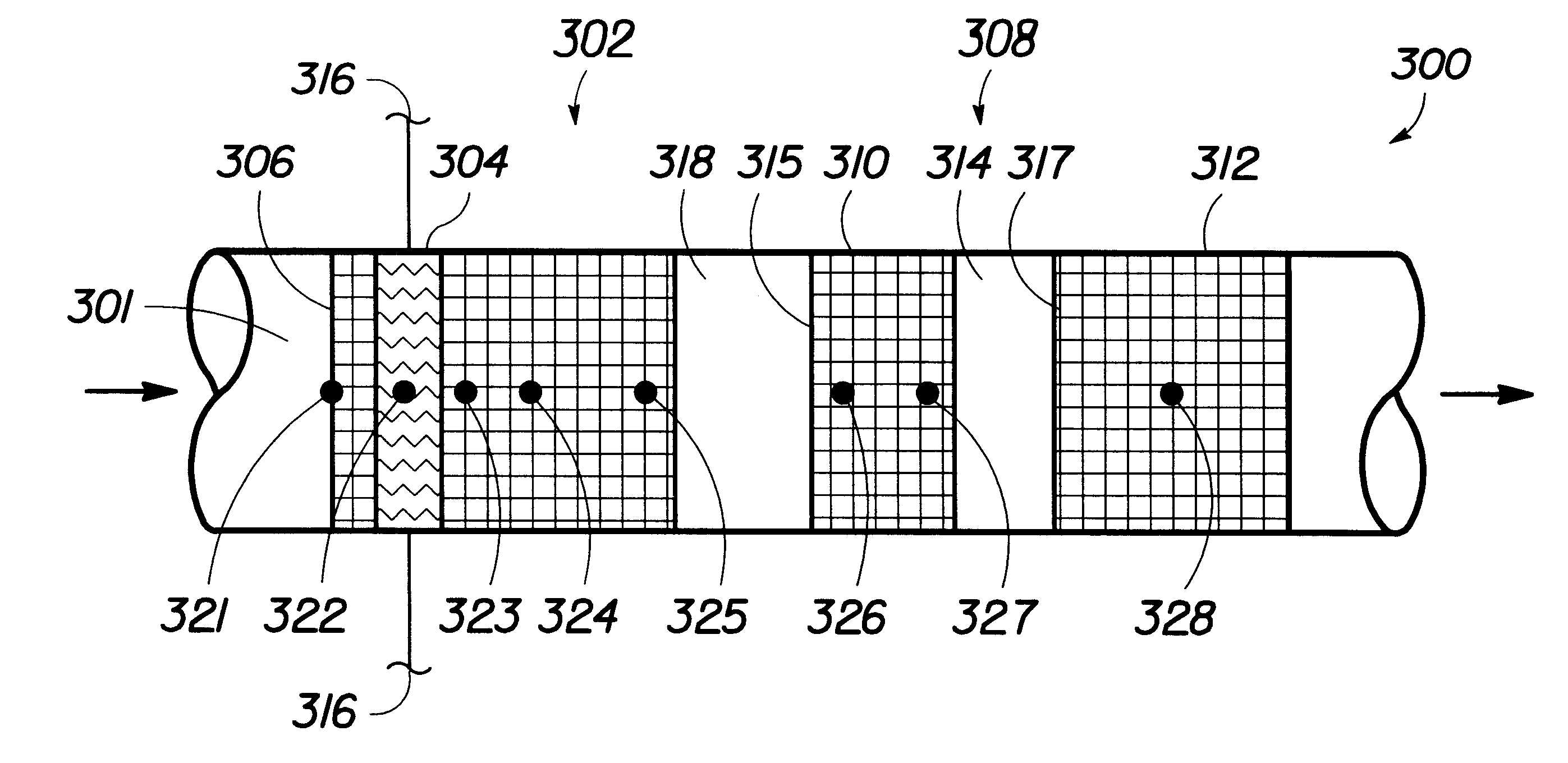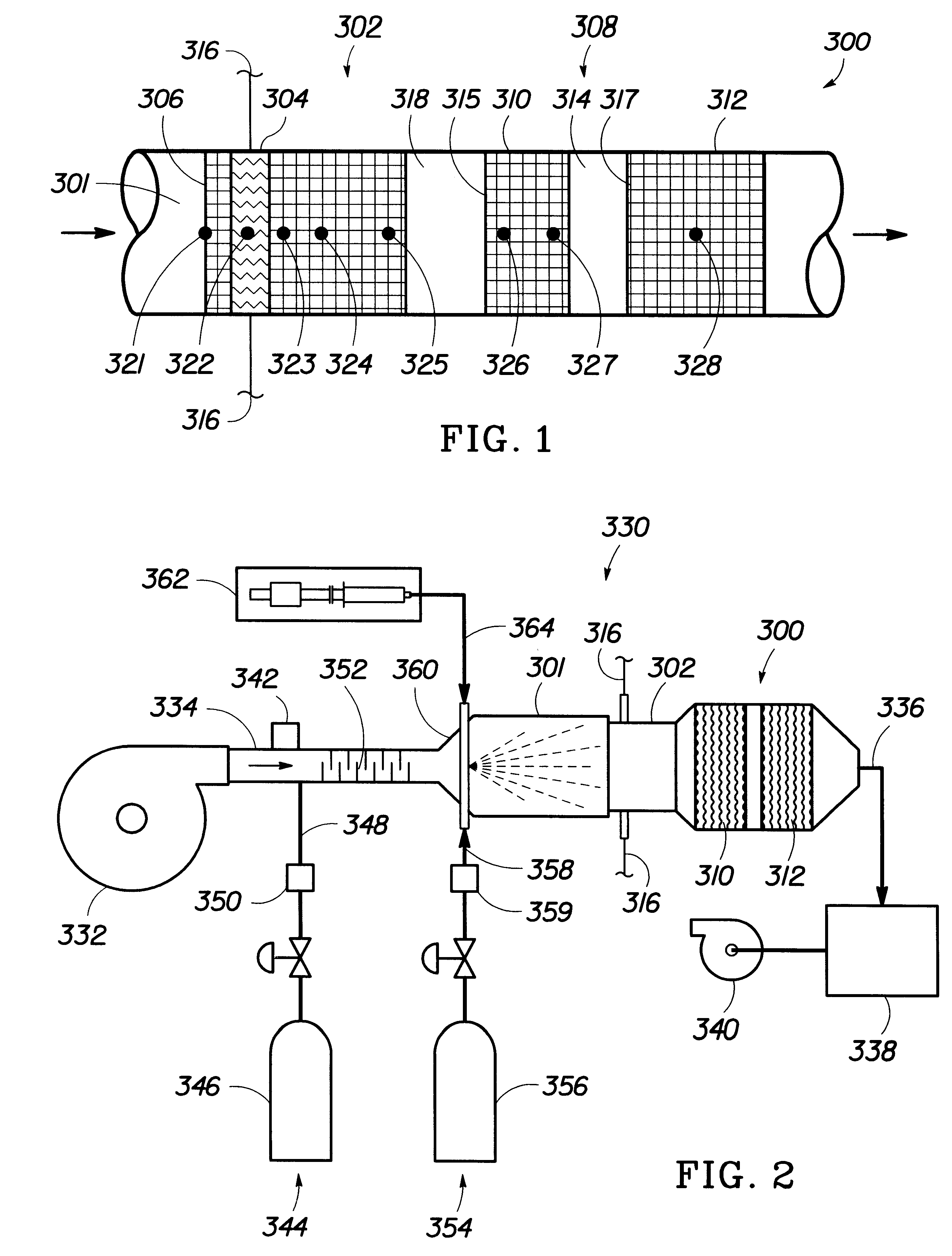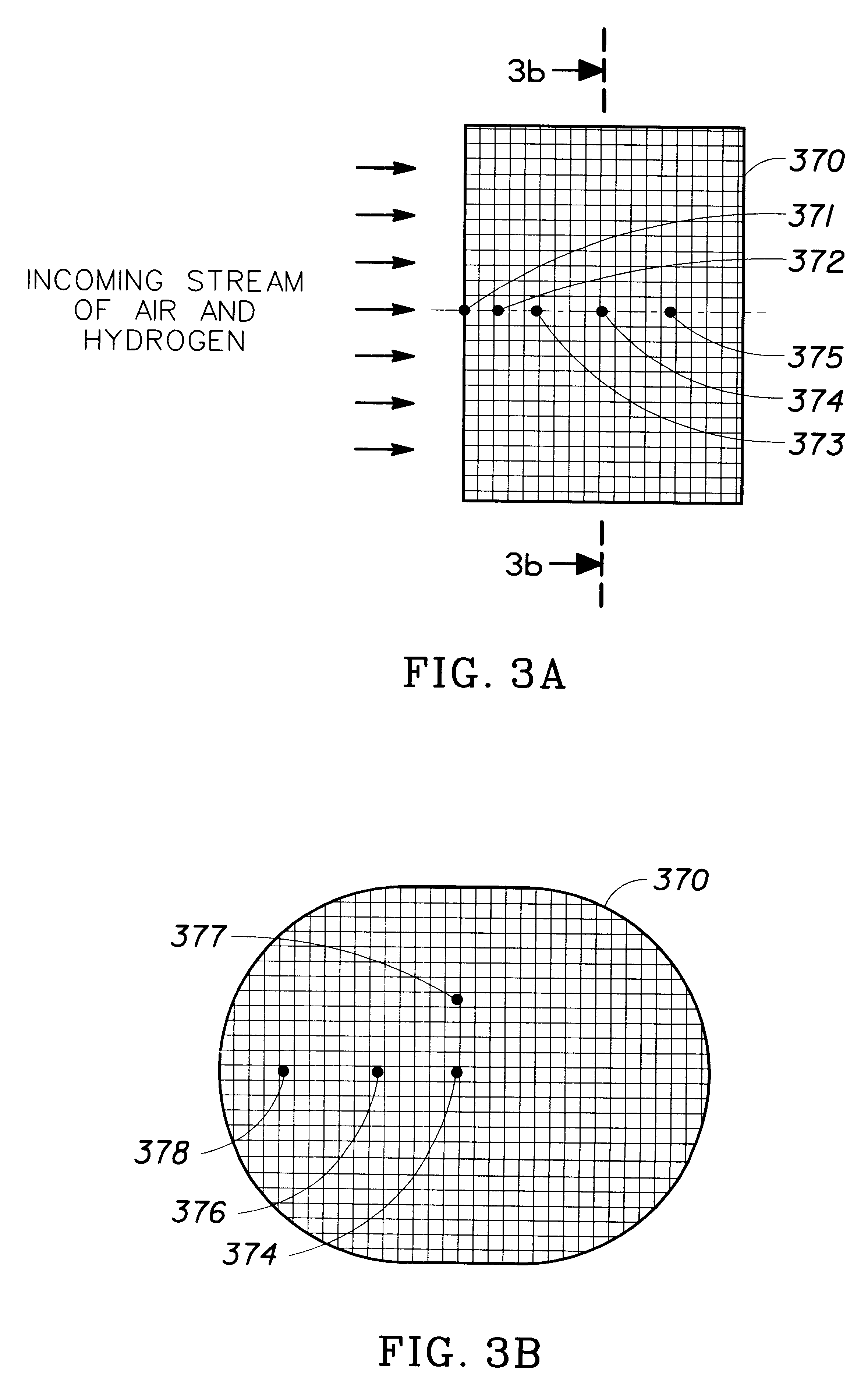Hybrid catalyst heating system with water removal for enhanced emissions control
- Summary
- Abstract
- Description
- Claims
- Application Information
AI Technical Summary
Problems solved by technology
Method used
Image
Examples
example # 2
EXAMPLE #2
The experimental setup 330 of FIG. 2 was used for the introduction of hydrogen and air to a wet catalytic converter 300. About 2 milliliters per minute of water was applied to the converter 300 at room temperature over a period of about 10 minutes through the liquid injection subsystem and allowed to soak for a period of about 10 minutes to simulate water that condenses in an automotive catalytic converter as the system cools. The blower 332 then provided air through the catalytic converter 300 at a rate of about 325 liters per minute (lpm) with about 6 vol % hydrogen. FIGS. 8(a-d) are graphs of the catalyst temperature over time with introduction of hydrogen and air to a wet catalyst along with no electrical heating, electrical heating from room temperature to 50.degree. C., electrical heating from room temperature to 100.degree. C., electrical heating from room temperature to 150.degree. C.
In the graphs, the temperature profile given by each thermocouple is labeled by th...
example # 3
EXAMPLE #3
The experimental setup 330 of FIG. 2 was used for the introduction of methanol and air to the catalytic converter 300. The blower 332 then provided air through the catalytic converter 300 at a rate of about 325 liters per minute (lpm) for a sufficient period of time to achieve a steady state temperature of 100.degree. C. throughout the entire catalytic converter. FIGS. 9(a-d) are graphs of the catalyst temperature over time with introduction of methanol at flow rates of 20 milliliters per minute (mlpm), 30 mlpm, 40 mlpm and 50 mlpm, respectively. The front thermocouple 321 is initially cooled by the flow of methanol and air. It is also apparent that the higher methanol flow rates provides more rapid heating.
example # 4
EXAMPLE #4
The procedure of Example 3 was repeated, but at an initial steady state temperature of 150.degree. C. FIGS. 10(a-d) are graphs of catalyst temperature over time with introduction of methanol at flow rates of 20 milliliters per minute (mlpm), 30 mlpm, 40 mlpm and 50 mlpm, respectively. Comparing FIGS. 10(a-d) with FIGS. 9(a-d), it is shown that a higher initial catalyst temperature allows the chemical heating to proceed at a much faster rate than at low initial catalyst temperatures.
PUM
| Property | Measurement | Unit |
|---|---|---|
| Angle | aaaaa | aaaaa |
| Angle | aaaaa | aaaaa |
| Angle | aaaaa | aaaaa |
Abstract
Description
Claims
Application Information
 Login to View More
Login to View More - R&D
- Intellectual Property
- Life Sciences
- Materials
- Tech Scout
- Unparalleled Data Quality
- Higher Quality Content
- 60% Fewer Hallucinations
Browse by: Latest US Patents, China's latest patents, Technical Efficacy Thesaurus, Application Domain, Technology Topic, Popular Technical Reports.
© 2025 PatSnap. All rights reserved.Legal|Privacy policy|Modern Slavery Act Transparency Statement|Sitemap|About US| Contact US: help@patsnap.com



